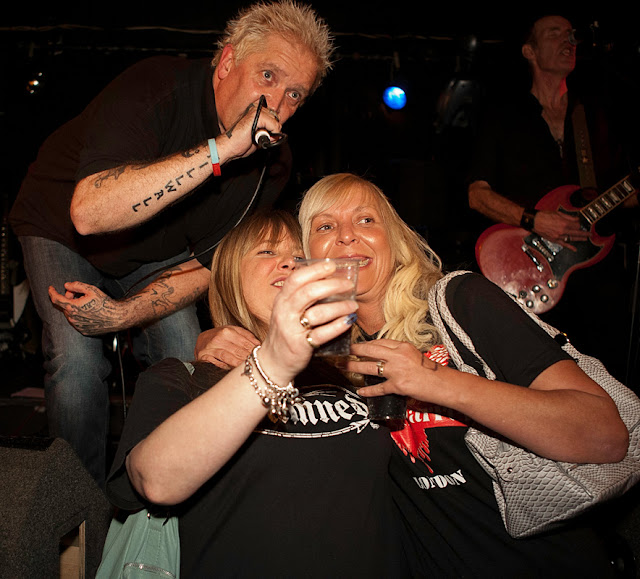I’ve been an admirer of Sham 69 from the early days back in ’77.
However, I have to admit to turning my nose up at most of the emerging punk bands from that era.
I was locked away in my room, practicing for endless hours and learning my craft as a bass guitarist…scales, arpeggios, playing to metronomes, radio, record player, whilst my mates were down at the pub, chasing the girls or at the footlball match.
I was a little resentful of the fact that any bunch of lads could go and buy a guitar, bass and drum kit and immediately call themselves a band and get gigs.
Looking back, I missed the spirit of it and over time have come to appreciate what was actually evolving.

I joined Sham 69 at Café Drummond, Aberdeen on their ‘Who killed Joe Public’ World Tour.
Jimmy Pursey, the original and charismatic front man permanently left the band in 2006 and was replaced by Tim V. The naysayers will say that Jimmy was Sham 69 and was irreplaceable, but Tim V carries the flag bravely and owns the stage.
Dave Parsons is still there on axe duties from the original line up, with Ian Whitewood on drums from the Pursey line up.
Bass duties are now in the hands of Al Campbell who toured extensively with the UK Subs.
Sham 69 were there from the start.
Sham 69 had a string of chart hits including ‘Angels With Dirty Faces’, ‘Hersham Boys’, ‘If The Kids Are United’, ‘Hurry Up Harry’, ‘Borstal Breakout’ and more.
I was a little apprehensive, having researched the history of the band and how they were plagued with an unwanted skinhead following, with violence expected at every gig.
I was joined by Dod Morrison, who I met for the first time.
Dod is THE punk photographer in the area who contributes to Big Wheel magazine and the safeconcerts website and covers the Rebellion Punk Festival in Blackpool.
Dod gave me the heads up that flash is permitted at the venue (just as well, as the lighting was non existent!)
I decided to monopolise on this and still shoot at a relatively high ISO setting to keep the shutter speed as high as possible to prevent motion blur and pick up what little ambient light there was to fill the gaps in the background.
I set the flash to manual and kept the power levels right down, remembering to change the setting as the distance between me and the subject constantly changed.
Typically, I used flash power settings of between 1/128 and 1/32.
There were three of us photographing the band and no photo pit, but we all worked around each other well, despite the relatively narrow stage.
The crowd stayed quite a way back for the majority of the set, but as the better known anthems came, things started to liven up, shirts came off and there was a surge to the edge of the stage.
There was beer flying and pushing/shoving (all part of the spirit of the moment)
Having bagged the ‘safe’ shots and no longer able to get near the front of the stage, I turned my attention to the interaction between the band and the crowd.
This is where the flash really came in handy!
I love working ‘in the thick of it’ at this type of gig…the images tend to have an ‘I was there’ feel to them, shooting right through to the last number, capturing the sweat, electricity and honesty and interaction as opposed to the 3 songs from the pit sterile ‘looking up noses’ images of the bigger concerts.
The audience is as important as the band at these shows and I always endeavour to come away with some images that capture the electricity between the two.












No comments:
Post a Comment